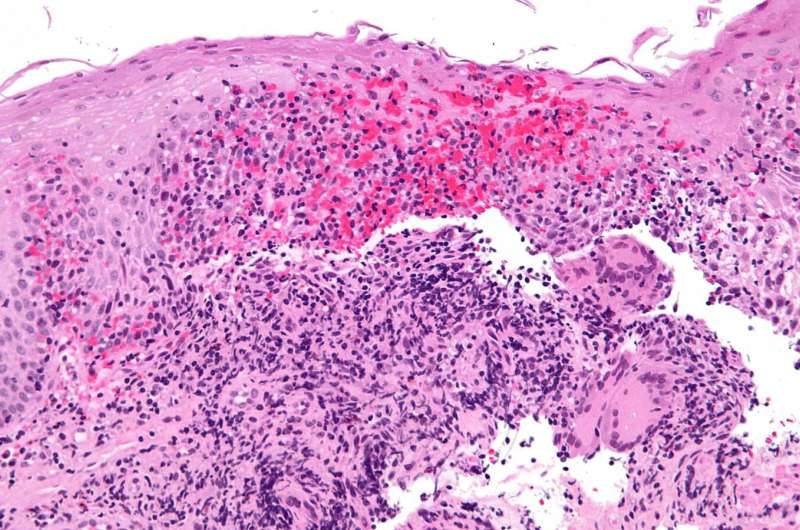
Scientists from the Stanley Manne Children’s Research Institute at Ann & Robert H. Lurie Children’s Hospital of Chicago demonstrated that a nanotherapy reduces intestinal inflammation and shrinks lesions in a rodent model of severe Crohn’s disease. This approach could become an alternative to biologic antibody therapies that carry many side effects, including increased risk of certain cancers. It might also prevent the need for surgery in the future. Findings were published in the journal Advanced Therapeutics.
Crohn’s disease is an inflammatory bowel disease characterized by chronic inflammation of the digestive tract, most often in the small intestine. It can lead to intestinal obstruction and perforation, bleeding, abdominal pain, severe diarrhea, fatigue, weight loss and malnutrition leading to growth abnormalities in children. One of the key features of Crohn’s disease is lesions along discontinuous segments of the intestine. Current treatments include biologic antibody therapies, and in severe cases surgery, which is not curative. It is estimated that 70 percent of patients with Crohn’s disease will require surgery during their lifetime and many will require additional surgery.
“We injected into the intestinal lesion nanomolecules that carry an anti-inflammatory peptide, which is a tiny portion of a protein,” says senior author Arun Sharma, Ph.D., Director of Surgical Research at the Manne Research Institute at Lurie Children’s and Research Associate Professor of Urology and Biomedical Engineering at Northwestern University Feinberg School of Medicine and McCormick School of Engineering. “The results were phenomenal. We saw reduction in inflammation based upon reductions in pro-inflammatory immune cells and proteins. The lesion size shrunk dramatically, which gives us hope that with this therapy we can salvage inflammatory tissue and avoid needing to surgically remove segments of the intestine in severe cases of Crohn’s disease.”
Based upon their design, these nanomolecules allow for a very concentrated dose to be introduced into a lesion. Dr. Sharma and colleagues observed that it creates an anti-inflammatory environment that not only keeps the lesion from growing but also reduces its size.
Source: Read Full Article
